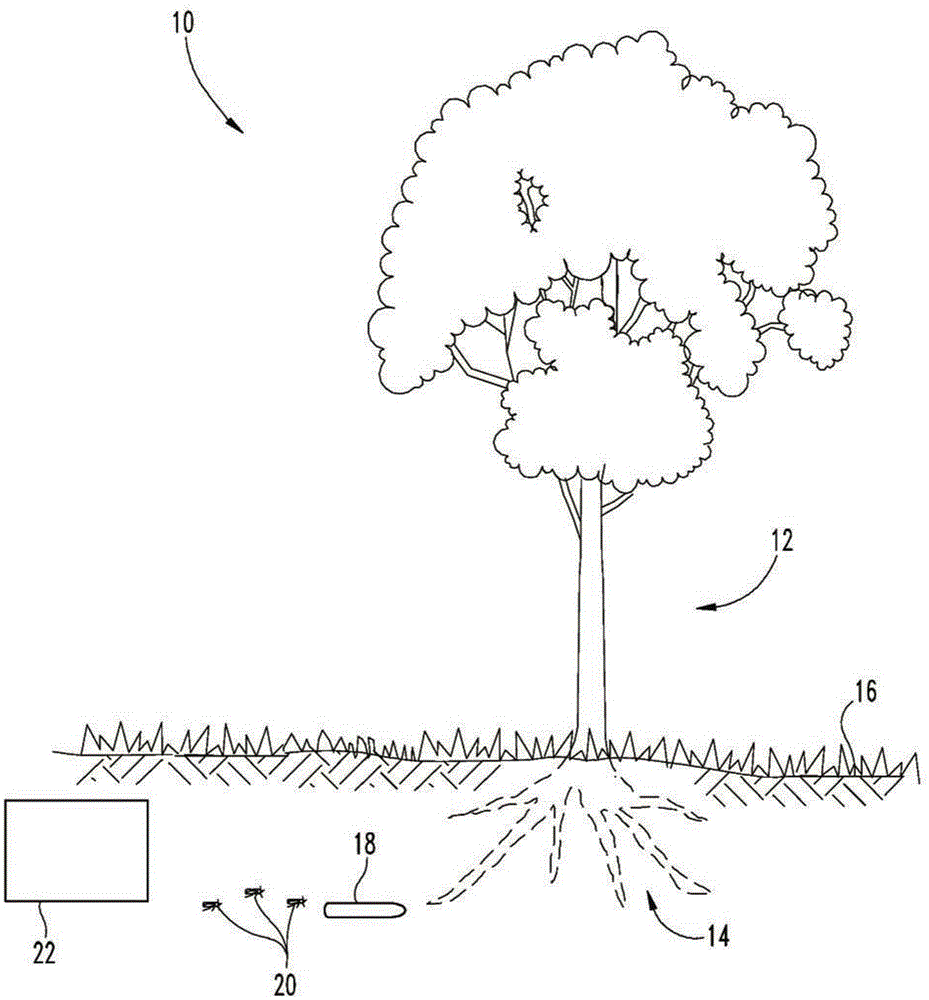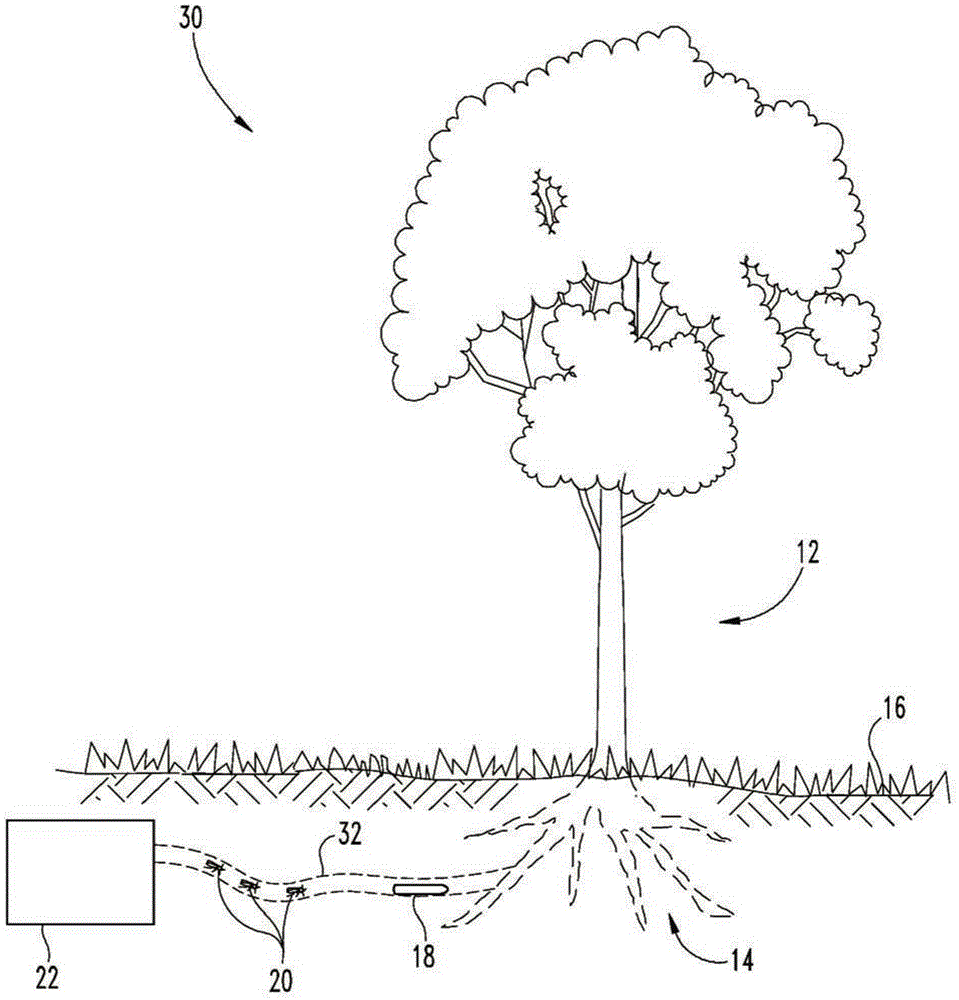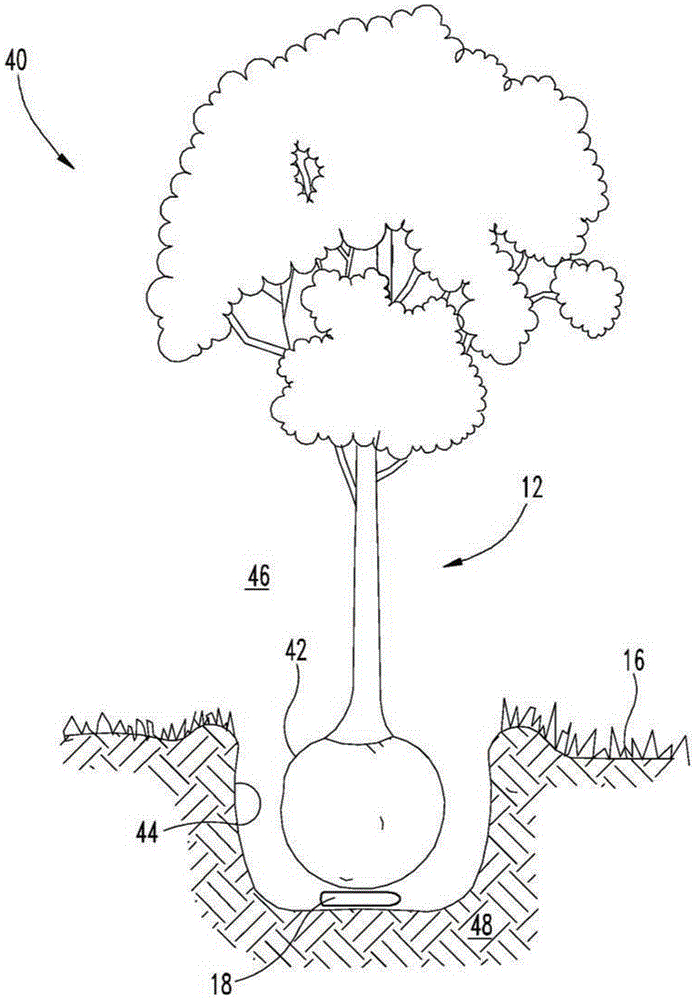Systems and methods for controlling pest infestation of a woody plant
A technology of woody plants and insects, applied in the field of systems and methods for preventing pests from invading woody plants, capable of solving environmental problems, shortening the period of pest control, lack of effective pest control focus or targets, etc.
- Summary
- Abstract
- Description
- Claims
- Application Information
AI Technical Summary
Problems solved by technology
Method used
Image
Examples
Embodiment I
[0071] test, determine Effects of HD Form Extruded Composite Member Fields on Coptotermes spp. Further details are available from US Patent No. 12 / 004,655. More specifically, a 100-hectare oil palm plot was divided into four quadrants: quadrants A, B, C, and D. The presence of termite activity or infestation in the oil palm trees in each of the quadrants A-D was studied, and affected trees were marked accordingly. The affected trees in quadrants A and C were each treated with liquid fipronil (2.5ml / 5L soaked), and the affected trees in quadrants B and D were each treated with 50g The extruded composite member in the form of HD (0.5% hexaflumuron) was treated in a similar manner as described above with respect to system 60 . For quadrants B and D, consumption of extruded composite members was studied and recorded accordingly. Post-treatment inspections were performed monthly for 23 months after initiation of treatment on affected trees. Table 1 below shows the treatment re...
Embodiment II
[0077] test, determine Effects of HD Form Extruded Composite Member Fields on Coptotermes spp. Further details are available from US Patent No. 12 / 004,655. More specifically, a 60-hectare oil palm plot was divided into two. The activity or infestation of termites present in the oil palm trees in each plot was studied, and affected trees were marked accordingly. Each affected tree in plot 1 was treated with liquid fipronil (soaked in 2.0ml / 5L), and each affected tree in plot 2 was treated with 50g The extruded composite member in the form of HD (0.5% hexaflumuron) was treated in a similar manner as described above with respect to system 60 . For plots 1 and 2, consumption of extruded composite members was studied and recorded accordingly. Post-treatment inspections were performed monthly for 24 months after initiation of treatment on affected trees. Table 2 below shows the treatment results at 7, 12, 18 and 24 months after initiation of treatment. Table 3 below shows the...
Embodiment III
[0083] test, determine Effects of HD Form Extruded Composite Member Fields on Coptotermes spp. Further details are available from US Patent No. 12 / 004,655. More specifically, the 1255.70 ha oil palm plot was divided into 18 blocks ranging from 15.97 ha to 58.70 ha. The activity or infestation of termites present in the oil palm trees within each block 1-18 was studied, and affected trees were marked accordingly. Apply 30g each to the affected trees The extruded composite member in the form of HD (0.5% hexaflumuron) was treated in a similar manner as described above with respect to system 60 . The consumption of extruded composite components was studied and documented accordingly. Every two months, pre-processing surveys, processing, and post-processing surveys are conducted on blocks. After baiting, survey, bait, and survey again. Table 4 below shows the cumulative results of each survey conducted.
[0084] Table 4
[0085]
PUM
 Login to View More
Login to View More Abstract
Description
Claims
Application Information
 Login to View More
Login to View More - R&D
- Intellectual Property
- Life Sciences
- Materials
- Tech Scout
- Unparalleled Data Quality
- Higher Quality Content
- 60% Fewer Hallucinations
Browse by: Latest US Patents, China's latest patents, Technical Efficacy Thesaurus, Application Domain, Technology Topic, Popular Technical Reports.
© 2025 PatSnap. All rights reserved.Legal|Privacy policy|Modern Slavery Act Transparency Statement|Sitemap|About US| Contact US: help@patsnap.com



